Embracing the Winter Mushroom Season
As the unique climate of the Pacific Northwest brings us into the cooler, moister months, it's a perfect time for us to venture out and explore the world of mushroom foraging. Our focus this time of the season is on two exceptional varieties: Yellowfoot Chanterelles (Craterellus tubaeformis) and Hedgehog Mushrooms (Hydnum repandum). Let’s dive into identifying these delicious fungi.
Spotting Yellowfoot Chanterelles in the Pacific Northwest
The Yellowfoot Chanterelle is a treasured find in our forests. Here’s what to look for:
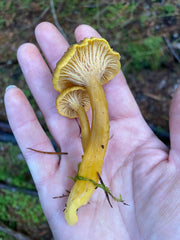
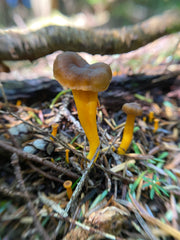
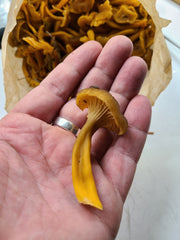
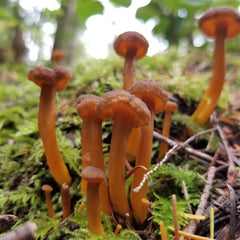
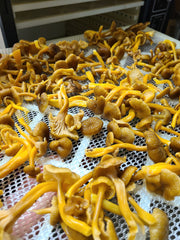
Identifying Hedgehog Mushrooms in the Pacific Northwest
Hedgehog Mushrooms are easy to identify with their unique features:
Cap: This mushroom has a smooth cap, 5-15 cm wide, initially convex and later flattening, with a color that varies from pale yellow to orange-brown.
Underside: The spines or teeth under the cap are a key identifier, white to pale yellow, and up to 6 mm long.
Stem: The stem is very sturdy, white to pale cream, and 3-10 cm long.
Texture: Its flesh is firm and white, sometimes turning slightly yellowish with age.
Habitat: These mushrooms are found in both deciduous and coniferous forests, near decaying wood, fallen logs, or in moss-rich areas.
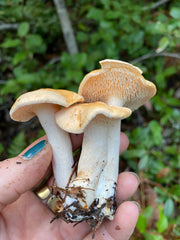
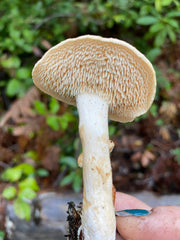

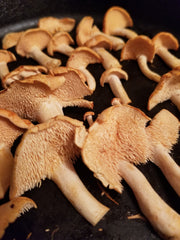
Capturing Your Finds for Accurate Identification
When you find these mushrooms, take detailed photos for identification, including top and side views in their natural setting. Gently unearth the entire mushroom to examine features that might be hidden underground, like the base of the stem (stipe) or its connection to the ground.
Enjoying Your Mushrooms Fresh or Pickled
While Yellowfoot and Hedgehog mushrooms don't fare well when dried and rehydrated, they shine when enjoyed fresh. Cook them in your favorite mushroom dishes to savor their flavor. Alternatively, pickling these mushrooms is a fantastic option. They maintain their firm texture and don’t get slimy, making them a delicious addition to various meals.
Happy mushroom hunting in the Pacific Northwest, and enjoy your Yellowfoot Chanterelles and Hedgehog Mushrooms, whether in a savory dish or as a tangy pickled delicacy! 🍄🌲🌧️


1 comment
How fun!! I found my first hedgehogs this weekend 🍄😍